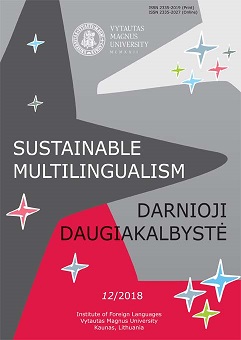Plurilingual primary school students and their language use
Plurilingual primary school students and their language use
Author(s): Rea Lujić, Silvija Hanžić DedaSubject(s): Foreign languages learning, Language acquisition, Sociolinguistics, Theory of Communication, School education, Sociology of Education
Published by: Vytauto Didžiojo Universitetas
Keywords: code-switching; positive language transfer; plurilingualism; plurilingual and pluricultural competence; translation;
Summary/Abstract: This case study examines the perspective of plurilingual primary school students on three aspects of their language use: code switching, positive language transfer and translation. In other words, the research question attempted to be answered in this paper is whether plurilingual primary school students use their communicative repertoires purposefully and strategically for their communication, acquisition, and learning of the languages. The research was conducted in a class of eighteen third-graders who attended an international primary school in Zagreb, with the average age of 9. Two questionnaires and a semi-structured interview were used to collect data about the students’ language background, their language use, and their motives for engaging in code-switching, positive language transfer, and translation. In this research, the majority of the participants reported code-switching, the use of positive language transfer and translation. The findings also suggest the students are aware of the benefits that accompany plurilingualism, and that most of the participants possess significant metalinguistic awareness regardless of their young age. To sum up, this case study brings a valuable insight into the plurilingual world of primary school children and the development of their metalinguistic awareness.
Journal: Darnioji daugiakalbystė
- Issue Year: 2018
- Issue No: 12
- Page Range: 114-129
- Page Count: 16
- Language: English

